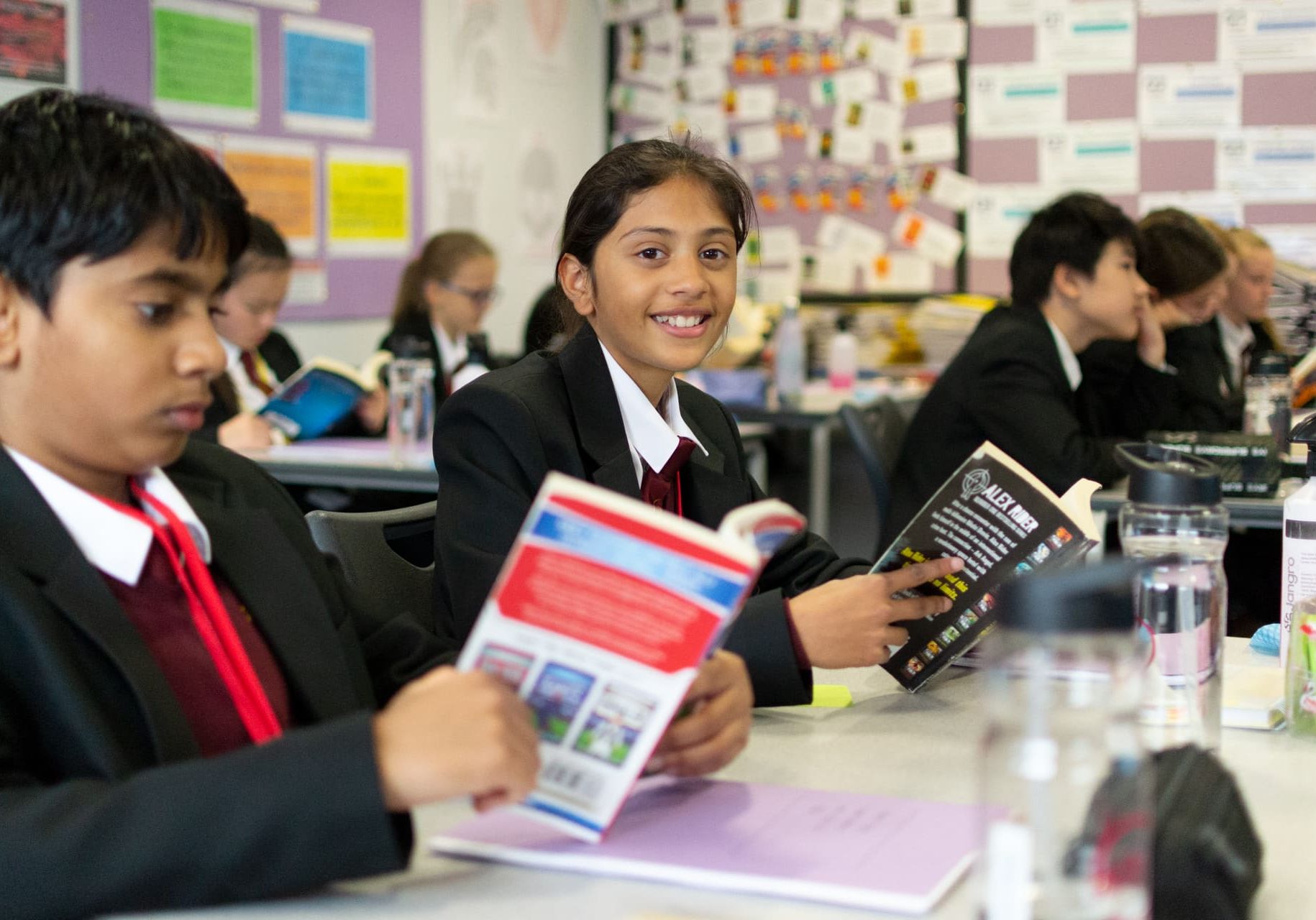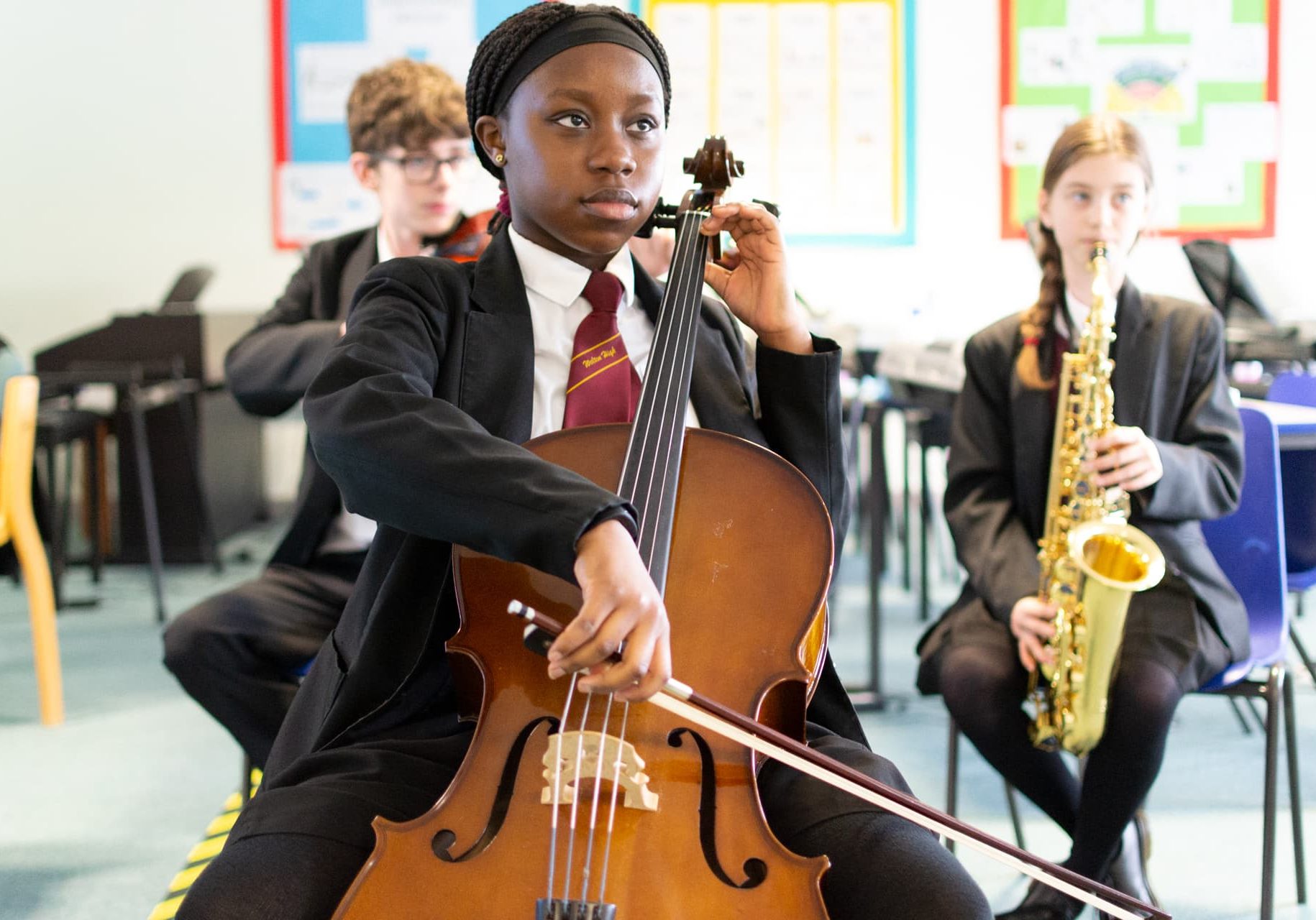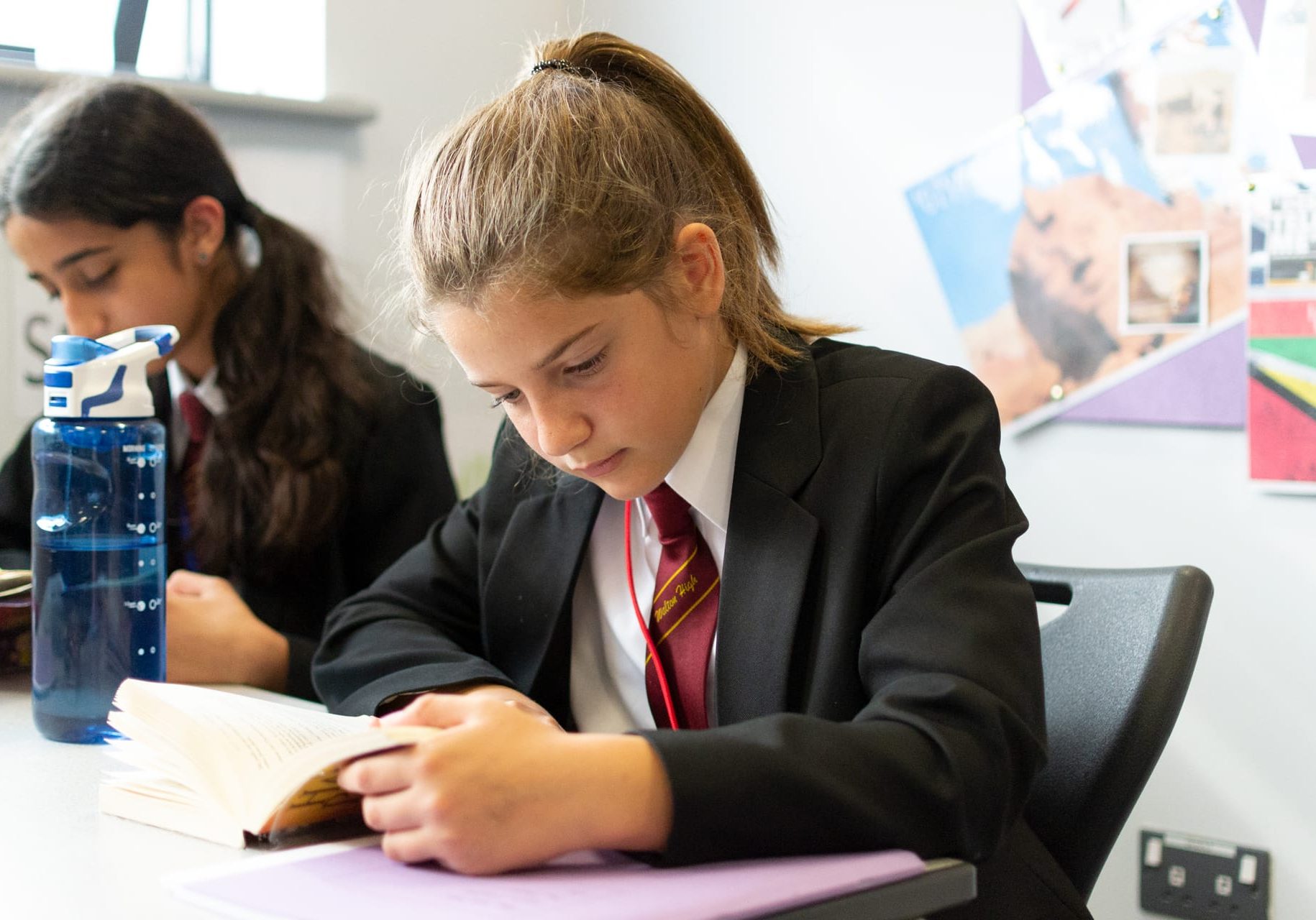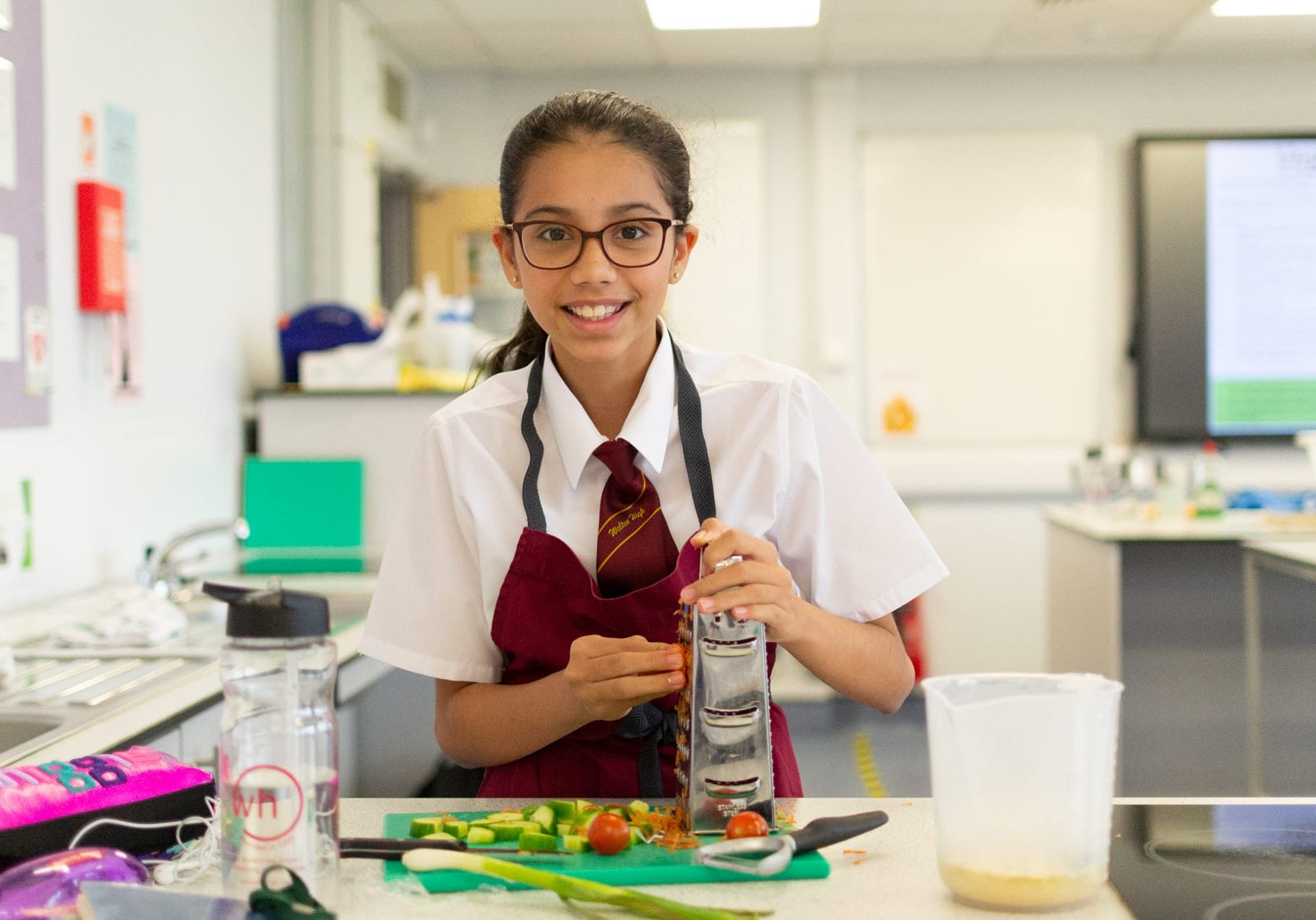Schools
International
Business & Enterprise
Linked Documents
Media
Creative Digital Media Production
Media at Walton High is a popular and ever growing subject area. The department is renowned for its high quality provision of both classroom and extra-curricular activities. This is an exciting time to be studying media industries – analysing how media text is constructed and deduced by its audiences. The ever-changing online platforms additionally pave the way for a higher number of young people interested in the subject since social media plays a key role in our society, culture and business!
The media team at Walton High offer their students the opportunity to investigate and explore subject content as early as Year 7 and 8. As part of the ADT rotation cycle, KS3 students have the chance to learn about a number of creative media sectors; advertising, film and music within a 6-7 week period. Students rotate every half term.
In Years 9, 10 and 11, Walton High students can select Media as a KS4 subject option. We currently deliver Pearson Level 2 BTEC Award (2013) and BTEC TECH Award (2017) in Creative Digital Media Production which comprises of units/components studied over three years (both internal and external assessments are available). Students develop their pre-production (research and planning), production (filming) and post-production skills (editing).
At Key Stage 5 (Years 12 and 13) specialist staff deliver our hugely popular Pearson Level 3 BTEC Diploma (2016) in Creative Digital Media Production (double award). Here students can experiment with specialist media techniques such as: Storyboarding, Lighting, Sound Editing, Scriptwriting and Film Production etc. Students study texts from a diverse range of film directors and TV producers (historical and contemporary) – Lumière brothers, Georges Méliès, Sergei M. Eisenstein, Alfred Hitchcock, Steven Spielberg, Martin Scorsese, and Quentin Tarantino etc
“Media is so much fun and the teachers really listen to their students; they build in what we want to learn. I made a superhero movie and its super awesome” – Year 9 students.
Our Aim
Media teachers at Walton High aim to fascinate and engage their students by using present-day media industries to bring learning to life, so that students can relate to familiar and current contexts. All projects are set within a vocational context - similar to the real world – for staff the main objective is for students to meet the client’s brief and requirements. Media staff greatly emphasise the importance in listening to clients and conducting research to find out exactly what the target audience wants from the market. The department’s overall aim is to work with young people and allow them to compete in a highly creative and dynamic industry.
Key Stage 3 Media As Part Of The ADT Rotation (Year 7 And 8)
Year 7
| Term | Digital Publishing - Topics |
|---|---|
| Week 1 | An introduction to media and learning the basics |
| Week 2 | Content analysis |
| Week 3 | Research and design |
| Week 4 | Responding to a brief and planning ideas |
| Week 5 | Pitching ideas |
| Week 6 | Self-Evaluation |
| Week 7 | Presentation of project |
Year 8
| Term | Moving Image - Topics |
|---|---|
| Week 1 | An introduction to media and learning the basics |
| Week 2 | Content analysis |
| Week 3 | Research and design |
| Week 4 | Responding to a brief and planning ideas |
| Week 5 | Pitching ideas |
| Week 6 | Self-Evaluation |
| Week 7 | Presentation of project |
Year 7 students will focus primarily on print media whilst year 8 take an emphasis on moving image. Written feedback from teachers will be regular and consistent. Clear comments will indicate areas of success in each student’s exercise book and practical advice will be offered on the next steps for improvement. This will ultimately allow students and parents to know exactly what to focus their effort on in following activities.
Pearson BTEC Level 1/2 Tech Award In Creative Media Production (Year 9)
Course Description and Content:
In this course, students develop their understanding of Media. This is part of a three year course. There are three main components, these are:
- Component 01 Exploring Media Products – Internal (36GLH)
- Component 02 Developing Digital Media Production Skills – Internal (36GLH)
- Component 03 Create a Media Product in Response to a Brief - Synoptic External (48GLH)
In each of these components, students will explore the following themes that make up the core subject content, which are:
- Client’s needs
- Generate ideas (moodboards) and development of ideas (mindmaps)
- Conducting research (focus groups, questionnaires, surveys, tally) and refine ideas (SWOT analysis)
- Planning documentation (location recces, budget sheets, risk assessments, schedules, storyboards etc)
- Verbal presentations (communication and presentation skills)
- Production skills (allocation of job roles, filming in production teams, capturing pick up shots)
- Post Production skills (photo editing, video editing – manipulation of media)
Year 9
| Term | Moving Image - Topics |
|---|---|
| Autumn Term 1a | Project 1 – Planning Skills |
| Autumn Term 1b | Project 1 – Production and Post Production Skills |
| Spring Term 2a | Component 1 – Learning Aim A1 |
| Spring Term 2b | Component 1 – Learning Aim B1 |
| Summer Term 3a | Component 1 – Learning Aim B2 |
| Summer Term 3b | Project 2 – Self Evaluation, Reflection, Feedback |
Component 01 Exploring Media Products
In this component students will develop their understanding of how media products are created for specific audiences and purposes. Students will explore the relationship between genre, narrative and representation within media products and develop your understanding of how they are interpreted by audiences. Students will extend their knowledge and understanding by deconstructing existing products in one of the three sectors: audio/moving image, publishing and interactive media, learning how media production techniques are used to create different effects to communicate meaning to audiences. This component will give students an understanding of media practitioners’ work, techniques and technology, which are used to contribute to the creation of media products.
Pearson BTEC First Level 1/2 Award In Creative Media Production (Year 10/11)
Course Description and Content:
In this course, students develop their understanding of Media. This is part of a three year course. There are four main units, these are:
- Unit 01 Digital Media Sectors and Audiences – External (30GLH)
- Unit 02 Planning and Pitching a Digital Media Product – Internal (30GLH)
- Unit 03 Digital Moving Image Production – Internal (30GLH)
- Unit 05 Digital Publishing Production – Internal (30GLH)
Year 10
| Term | Moving Image - Topics |
|---|---|
| Autumn Term 1a | Unit 5 – Task 1, 2, 3 (Learning Aim A) Learners need to understand that traditional print material is being largely replaced with digital versions and that this is transforming the publishing industry and the techniques and technology involved in its production, distribution and exhibition processes. |
| Autumn Term 1b | Unit 5 – Task 4, 5 (Learning Aim B&C) Learners will understand how to source and import material and be able to experiment with digital publishing technology and techniques. Learners will also use the understanding and skills developed in Learning aims A and B to develop a concept for a digital publishing product and see this through to a finished product. |
| Spring Term 2a | Unit 01 Revision Content – Learning Aim A & B |
| Spring Term 2b | Unit 01 Revision Content – Learning Aim B & C |
| Summer Term 3a | Unit 01 Revision Content – Mock Exam / Feedback |
| Summer Term 3b | Unit 5 tidy up |
Unit 05 Digital Publishing Production
The focus of Unit 5 is to understand digital publishing production and to develop skills to produce digital publishing products. It is essential for the learner to use the information they find in learning aim A to inform their own understanding of digital publishing opportunities. Learners must be able to demonstrate that they can use techniques and technology to import sources of material. At the highest level this will be demonstrated by the sophisticated use of a wide range of technology and techniques. This should not be limited to simplistic downloads, although this would meet the requirements for Level 1. In order to meet the requirements for Distinction the learner must be able to use a wide range of technology and techniques. Learners will then experiment with a range of digital techniques and technology that allow them to develop their skills. It is essential that learners can store their work effectively and safely. At level 1 this may well be storage on a hard drive with no back-up. At Level 2 Distinction the learner will store their work safely and back-up on multiple devices to ensure that work is not lost.
Unit 01 Digital Media Sectors and Audiences
Externally assessed unit 1 will explore the different digital media sectors and the products they produce. You will understand the range of technological platforms used to distribute media, and how each sector has a common production process. Underpinning every digital media production is an audience of some kind: gamers, surfers, viewers, readers or listeners. The audience plays an increasingly important role not only in consuming media products, but also in generating them and interacting with their content. You will understand how media producers consider how to interact and communicate with audiences and how information on the audience can be gathered and interpreted.
Your understanding of digital media sectors and audiences will therefore form the basis of all other units and will provide a solid foundation on which to proceed with your own ideas for a digital media production.
Year 11
| Term | Moving Image - Topics |
|---|---|
| Autumn Term 1a | Unit 02 – Task 1, 2 (Learning Aim A) |
| Autumn Term 1b | Unit 02 – Task 3, 4 (Learning Aim B&C) |
| Spring Term 2a | Unit 03 – Task 1, 2 (Learning Aim A&B) |
| Spring Term 2b | Unit 03 – Task 3, 4, 5 (Learning Aim C) |
| Summer Term 3a | Tidy up and sign off students (sign documentation) |
| Summer Term 3b | Year 11 GCSE exams only |
Unit 02 Planning and Pitching a Digital Media Product
In unit 2 learners will develop your verbal, written and visual communication skills to enable you to understand the needs of your client and to help you formulate, develop and pitch your own ideas for a media product. You will then undertake pre-production planning for a digital media product in preparation for the next phase in the process: production. Learners will be required to develop ideas and plan for the production of a digital media product from one sector.
Unit 03 Digital Moving Image Production
Unit 3 covers a very wide range of film and video making from feature films, TV adverts, news slots, music videos, animations, promotional videos to educational shorts. In industry practice, the filmmaker can be one person and a camera or it can be the director of a cast and crew of hundreds. Different types of moving image production have different features and it is important to understand what makes each one slightly different from the next. Filming a documentary short is quite different from making drama. Making a TV commercial is different again! However, the common factor these all share is the use of camera and other technical elements to communicate effectively with the target audience. In this unit, you will explore the construction of different types of moving image productions: fictional, factual and promotional. You will focus on camerawork as key to the ‘language’ of visual communication but will also explore mise en scène (setting, locations, props, costumes and make-up), sound and editing which are all necessary components of a finished product. You will investigate key features of digital moving image productions, including structures, generic conventions and audience address, in preparation for the making of your film or video.
Pearson BTEC Level 3 National Diploma In Creative Digital Media Production (Year 12/13)
Course Description and Content:
In this course, students develop their understanding of Media. This is part of a two year course. There are ten main units, these are:
- Unit 03 Digital Media Skills – Mandatory Synoptic (120GLH, External)
- Unit 08 Responding to a Commission – Mandatory (120GLH, External)
- Unit 07 Media Enterprise – Mandatory (60GLH, Internal)
- Unit 10 Film Production Fiction – Mandatory (60GLH, Internal)
- Unit 18 Storyboarding for Digital Media – Optional (60GLH, Internal)
- Unit 19 Scriptwriting – Optional (60GLH, Internal)
- Unit 20 Single Camera Techniques – Optional (60GLH, Internal)
- Unit 21 Film Editing – Optional (60GLH, Internal)
- Unit 24 Sound Editing – Optional (60GLH, Internal)
- Unit 36 Lighting Techniques – Optional (60GLH, Internal)
Externally-assessed units
Each external assessment for a BTEC National is linked to a specific unit. All of the units developed for external assessment are 120 GLH to allow learners to demonstrate breadth and depth of achievement. Each assessment is taken under specified conditions, then marked by Pearson and a grade awarded. Learners must achieve all external units at pass grade or above. Learners are permitted to resit any external assessment only once during their programme. Some external assessments include a period of preparation using set information. External assessments are available once or twice a year.
Internally-assessed units
Most units in the sector are internally assessed and subject to external standards verification. This means that the school will set and assess the assignments that provide the final summative assessment of each unit, using the examples and support that Pearson provides.
In line with the requirements and guidance for internal assessment, the school will select the most appropriate assessment styles according to the learning set out in the unit. This ensures that learners are assessed using a variety of styles to help them develop a broad range of transferable skills.
Learners are given opportunities to:
• demonstrate practical and technical skills using appropriate tools/processes etc
• complete realistic tasks to meet specific briefs or particular purposes
• write up the findings of their own research
• use case studies to explore complex or unfamiliar situations
• carry out projects for which they have choice over the direction and outcomes.
The school will make grading decisions based on the requirements and supporting guidance given in the units. Learners may not make repeated submissions of assignment evidence.
Synoptic assessment
Synoptic assessment requires learners to demonstrate that they can identify and use effectively, in an integrated way, an appropriate selection of skills, techniques, concepts, theories and knowledge from across the whole sector as relevant to a key task.
BTEC learning has always encouraged learners to apply their learning in realistic contexts using scenarios and realistic activities that will permit learners to draw on and apply their learning. For these qualifications we have formally identified units to be a focus for synoptic assessment.
The school will plan an appropriate delivery of units with synoptic assessment to ensure that learners would be ready to take assessment as they are expected to be able to draw on a range of content. Synoptic units may be internally or externally assessed.





